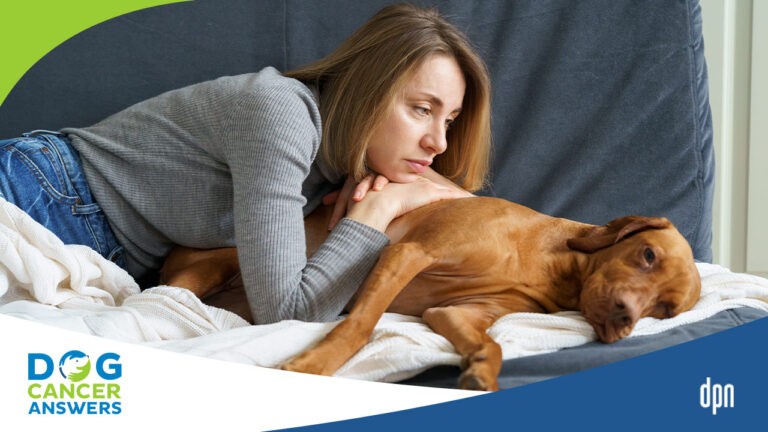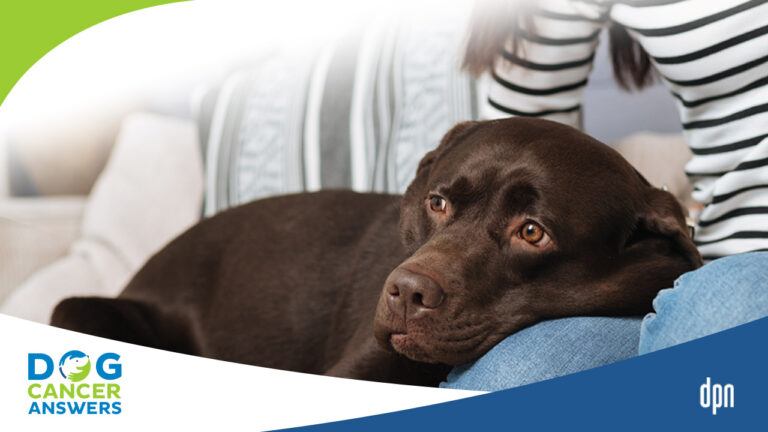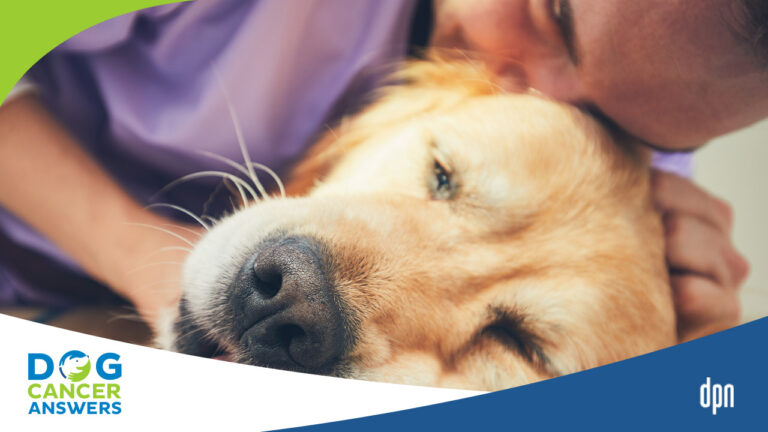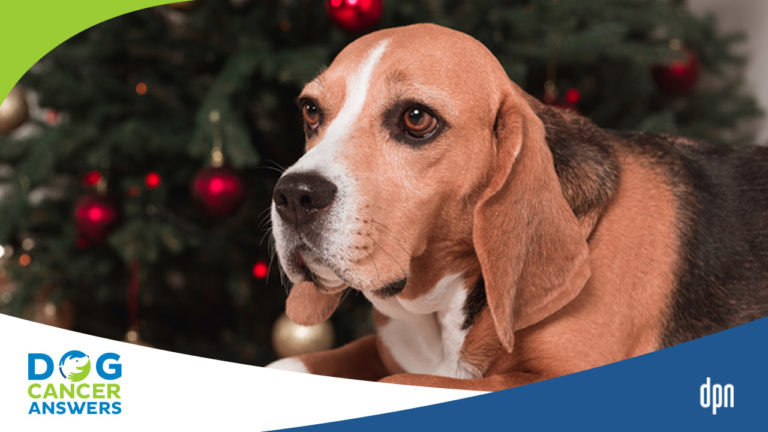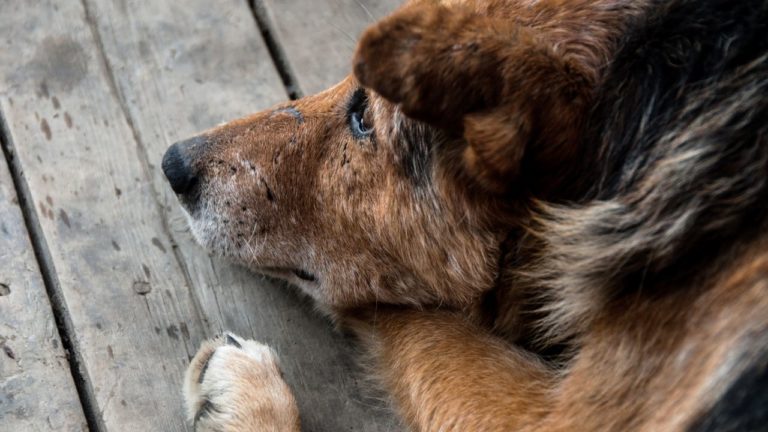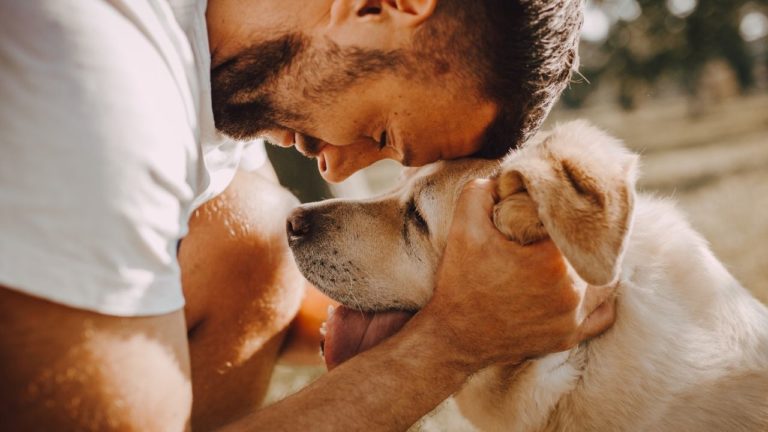Dog Euthanasia: What Happens
You probably have a lot of questions about euthanasia for dogs, and a lot of fear. Let us help you navigate this difficult time.

Read Time: 10 minutes
The worst thing about owning and loving dogs is that their lives are so much shorter than ours.
But as our beloved canines age and become sick, we do have the option to end suffering with euthanasia. It is the hardest, but most selfless gift that we can give.
Here is everything that you need to know about euthanasia for dogs. We hope this can help to make the process easier and less stressful for you and your dog.
Topics that we will cover include:
- Should I euthanize my dog? Quality of life and personal beliefs.
- What to expect during a euthanasia appointment.
- How to reduce stress for you and your dog during euthanasia.
- How do I know it’s time?
- Home euthanasia vs. in-hospital.
- Emotional considerations for you and your dog.
- What to do with the remains.
- Why isn’t euthanasia for dogs free?
- More euthanasia resources.
Should I Euthanize My Dog?
This is a very difficult question, and there often is not a black and white answer.
The word “euthanasia” literally means “good death.” The goal is to provide a smooth, painless transition.
A natural death can also be a good death, of course. But sometimes it is not. It can be painful and drawn-out.
We all hope that our dogs will die peacefully in their sleep at an old age, but unfortunately that is often not the case.
And there is no way to know what your dog’s experience will be until it actually happens.
This is one reason many choose euthanasia. We have a better chance of creating a peaceful, smooth, painless transition when we take charge of the process ourselves.
Still, the decision to euthanize or not usually hinges on your dog’s quality of life and your personal beliefs.
Quality of Life
We all have good days and bad days. That’s normal.
But when your sick dog is having far more bad days than good ones, her quality of life is decreasing.
This can happen with any illness at any age and may be reversible. For example, if your dog has Lyme disease, she may be absolutely miserable, but will probably improve dramatically within two days of starting treatment.
But for dogs with cancer and other chronic illnesses, there may eventually come a point where there is nothing more that we can do to relieve pain and discomfort or try to gain remission.
The bad days outnumber the good days, and there is no longer much hope that the good days will return.
Suffering
The other word that is used a lot when discussing euthanasia is suffering.
No one wants their dog to suffer.
When your dog is miserable and in pain, and you can’t make it better, euthanasia is the final option that ends suffering.
Your Beliefs
Depending on your religious or spiritual beliefs, you may not be comfortable with euthanasia for dogs. That is okay.
The decision to euthanize a pet is a deeply personal one, and no one can make that decision for you.
If your dog is nearing the end of his or her life and you are uncomfortable with euthanasia, take this opportunity to learn about the process so you can make an informed decision.
Then, once you have the information you need, make the decision based on what feels right for you and your dog.
Dog Euthanasia: What Happens
The exact process may vary a little between facilities, but there is a general flow that many veterinarians follow for euthanasias.
Note: This description is based on you staying with your dog. You do not have to stay with your dog during euthanasia. If you prefer not to bear witness, the process will be very similar for your dog, but she will be accompanied by staff members.
The decision about whether to stay with your dog during euthanasia is deeply personal, and no one can make that decision for you.
The best advice we can offer is to think ahead a few years and imagine how you will feel looking back.
If you think you will regret not being with your dog, you should probably stay, even though it will be very painful.
Check In
First, you will check in with reception when you and your dog arrive. Many hospitals take care of the “paperwork” aspect of euthanasia at this time, so that you can focus completely on saying goodbye to your dog.
The receptionist will ask what you would like to do with the remains afterward, as well as about any extras such as a paw imprint or trimming some locks of your dog’s hair.
You may also be able to pay the bill at this time so you don’t have to do it later.
Some veterinary hospitals have started doing a very kind thing for dogs during check-in: giving them chocolate!
Chocolate is toxic for dogs, so they never get to eat it… but now, they may get their very own chocolate “kiss” to try.
The Room
Next, you and your dog will be brought to an exam room.
Many hospitals now have dedicated “comfort rooms” that are in a quieter location and designed to feel cozier than the typical exam room.
If this is not available, the staff will likely bring in extra blankets or a bed to keep your dog comfortable.
Catheter or Sedation
Your veterinarian wants your dog’s euthanasia to be as peaceful and straightforward as possible.
Many will give a sedative to make your dog sleepy. This helps to calm your dog and will make the final injection less stressful for her.
Sedatives are almost always given in the room with you, and then you and your dog will be left to cuddle while the drug takes effect so she can doze off in your lap.
This can take 10-15 minutes depending on your dog and the sedative used.
Some hospitals will place a catheter in your dog’s leg once they are asleep.
This allows direct access to the bloodstream for the final injection, which can help it to go more smoothly.
A technician may take your dog to the back treatment area of the hospital to place the catheter, but if you would prefer your dog to stay with you the whole time, just ask.
A Private Moment
At this point, a staff member will usually ask you if you are ready for the veterinarian, or if you would like some more time to say goodbye to your dog.
If this isn’t offered but you would like a little extra time, just ask.
Take as much time as you need – all of the staff are animal lovers, and they really understand.
The Final Injection
Euthanasia itself is usually done with an overdose of the anesthetic sodium pentobarbital.
Most veterinarians will ask if you have been through this process before and describe it if you haven’t.
Most will describe it even if you have been through it, just to make sure you are prepared.
The injection is given intravenously (IV), or directly into a vein.
Your dog will fall asleep, and then her heart will stop beating.
The effects are usually very rapid.
Euthanasia for dogs can take as little as 30 seconds, but the exact time can vary from dog to dog.
Really ill dogs generally pass away very quickly, but a dog with poor circulation may take longer because the drug moves through the bloodstream to the heart and brain more slowly.
Dogs who are really amped up due to stress can also take longer, which is one of the reasons why many veterinarians give a sedative first to calm them. In rare cases, an extra dose of the euthanasia drug may be needed.
The veterinarian will listen to your dog’s heart with a stethoscope to make sure that it has stopped beating.
Immediately After Death
After your dog’s heart has stopped, you may still see a few skin twitches and tremors. These are reflex muscle contractions, and while they can be unsettling, they are normal and do not mean that your dog is still alive.
A few dogs may have what is called agonal breaths, where they might look like they are starting to take a deep breath. This isn’t really true breathing – it is just the dog’s diaphragm muscle in the chest doing those reflex twitches.
Your dog may also urinate or defecate due to those muscles relaxing. The eyes often stay open but will appear glassy and distant.
If you are taking your dog home for burial, the staff will help you wrap her up and move her to your car.
If her remains are being handled by the hospital, you can stay with her as long as you need to, and then the staff will take over when you leave.
Reducing Stress During Euthanasia for Dogs and Their Humans
Obviously, this is a super stressful time for you, and it may be for your dog as well. Here are some things you can do:
- Think about things like cremation vs. burial ahead of time, even while your dog is still healthy. That will be one less decision you have to make when the time comes.
- Talk to your family members about who might want to be present at the time of euthanasia so you have a plan of who to notify.
- Bring a blanket and some of your dog’s favorite treats. The blanket will smell like home, and your dog might appreciate a tasty snack.
- Ask as many questions as you need to.
- Take as much time as you need.
- Play music if desired. Some hospitals play soothing classical music in the comfort room, but you always have the option to bring a phone or other device to play a favorite song while saying goodbye to your dog.
- Try to stay calm to keep your dog calm.
- Pet your dog with long, slow strokes. These are calming for both her and you. Ear rubs are also excellent because dogs have acupressure points in their ears.
- Talk to your dog. Tell her how perfect she is, and describe some of your favorite memories with her. Try to visualize those favorite moments too.
- Reach out to a friend or family member if you are worried about being able to drive home.
How Do I Know It’s Time?
This is a difficult question, and it can be hard to define. In my experience, there are concrete signs that the end is approaching, and then the actual decision is made on a gut feeling.
Good Days and Bad Days
The first thing to do when you think your dog is nearing the end of his or her life is to keep track of the good and bad days.
Bad days are okay – we all have them. But you want your dog to have more good days than bad days.
This means that she is still enjoying life, and likely not suffering.
Think about it like this: when you stub your toe, it really hurts, but the pain is transient. If that pain continued forever, though, it would wear down on you.
Keeping track can be very simple. Just a heart on the calendar on a good day, or an X on a bad day, may be enough of a visual to help you see the trends.
Quality of Life List
Also, make a list of all the things your dog loves and enjoys. It could be food, favorite people, games she likes to play, or parks she likes to visit.
All of these favorite things contribute to your dog’s quality of life. If she can enjoy the things she always has, she still has something to live for.
As your dog ages, she may no longer be able to enjoy some of the things she once did.
Some activities you will be able to modify. For example, we heard from one dog lover who took her dog for rides in a wagon after he could no longer walk his favorite route.
Other things will eventually be crossed off the list as your dog is either no longer physically able to enjoy them, or stops getting excited.
Medical Evaluations
Examinations, bloodwork, x-rays, and other diagnostic tests all give you feedback on how your dog is doing physically.
Some things to worry about include weight loss and no longer responding to treatments.
Your vet will interpret test results and exam findings for you and will let you know if your dog is improving or not.
You Will Know
It sounds cliché, but you will know when it is time to euthanize your dog. You will feel it in your gut.
As you start getting that feeling, sit down and talk it over with your dog.
Ask her how she is feeling, and if she wants to keep going or not.
I know it sounds silly, but she will let you know.
We worry a lot about getting the timing exactly right, and that isn’t really fair. None of us have a crystal ball.
Be kind to yourself, and know that you made your decision based on the information that you had at the time and that you made it out of love. Your dog knows this too.
If you want more perspective on how to know when your dog is close to death, this article on warning signs a dog is dying is a good one to read.
Home Euthanasia for Dogs vs. In-Hospital
Euthanasia can be done in the veterinary hospital, or it can be done at your home.
Home euthanasia is a popular option because it allows your dog to stay in a familiar environment for her final moments. It can also be comforting for us and gives other pets a chance to say goodbye.
Your regular veterinarian may be willing to do house calls for euthanasia appointments, or you may need to schedule with a traveling vet who specializes in home euthanasia.
Home euthanasia may not be a good fit if your dog is extremely protective of her home, or if you do not want the memory of your dog dying at home.
If you would like your dog to be euthanized at home, an appointment will need to be scheduled ahead of time. This allows your veterinarian to plan travel time into their day.
Emotional Considerations
Saying goodbye to your dog is extremely emotional, and everyone grieves differently.
For You
- Take the time you need to grieve. Seek out friends and family members who understand the bond you share with your dog.
- Many of us want the closure of being there for our dog’s euthanasia. But if you do not want to be present, you do not have to be, and there is nothing wrong with that.
- Ask questions if you need to, and ask for extra time with your dog if you want it. Veterinary staff all love animals, and they understand.
For Your Dog
- Pet your dog with long, slow strokes. This will calm and comfort her.
- Try to stay calm, even as your heart breaks. Reassure your dog that you love her, and it will be over soon.
- Bring a blanket from home that smells familiar.
What to Do With the Remains
You will need to decide if you want your dog cremated or buried. Some areas may allow home burial, but others might require dogs to be buried in a dedicated pet cemetery.
If you have opted for home burial, you will be able to take your dog’s body home immediately after the euthanasia appointment. Some hospitals may have a relationship with a burial service and can take care of that for you.
If you have opted for cremation, the veterinary hospital will usually handle the logistics. Some hospitals have their own crematory, while others use a separate service.
Why Isn’t Euthanasia for Dogs Free?
The cost of euthanasia is a delicate subject. Some hospitals do offer free euthanasia, but in most cases, it is simply not feasible.
Your veterinarian does not want to euthanize your dog or any other animal, for that matter.
Taking a life is no light matter, for professionals or for us dog lovers.
But when an animal is suffering, and there is no longer anything that the veterinarian can do to help it, taking the pain away is the final gift that can be given.
It is a very hard part of the job, but one that many veterinarians feel deeply passionate about. This is especially true if your vet has known you and your dog for a long time – they are saying goodbye to a friend too.
Despite all of the emotional feelings around euthanasia, there are still many costs associated with it. There are the medications, materials for the catheter, and the time that the veterinarian and staff spend with you and your dog. Ironically, euthanasia appointments are usually the most costly appointments for your veterinary practice to offer in terms of labor and time. They prioritize you and your comfort and give you whatever you need.
If you have financial concerns about euthanasia, there are resources that you can turn to for help. Your veterinary clinic may also have a fund where they take donations and set them aside to help owners who have to say goodbye to their pets.
More Euthanasia Resources
There are many articles and podcast episodes on this site that deal with euthanasia that you may find helpful.
This episode of THE LONG LEASH featuring Lori Levine is a MUST-listen if you are facing, or have recently gone through, euthanasia. Lori lost multiple dogs in a short space of time, and she has a lot of tender, sweet, and sometimes hilarious advice.
Whether you have already said goodbye to your dog or are preparing to make that decision, know that we are thinking of you and that your dog will always, always love you.
Paws and wags,
Kate
Kate Basedow, LVT
Topics
Did You Find This Helpful? Share It with Your Pack!
Use the buttons to share what you learned on social media, download a PDF, print this out, or email it to your veterinarian.


